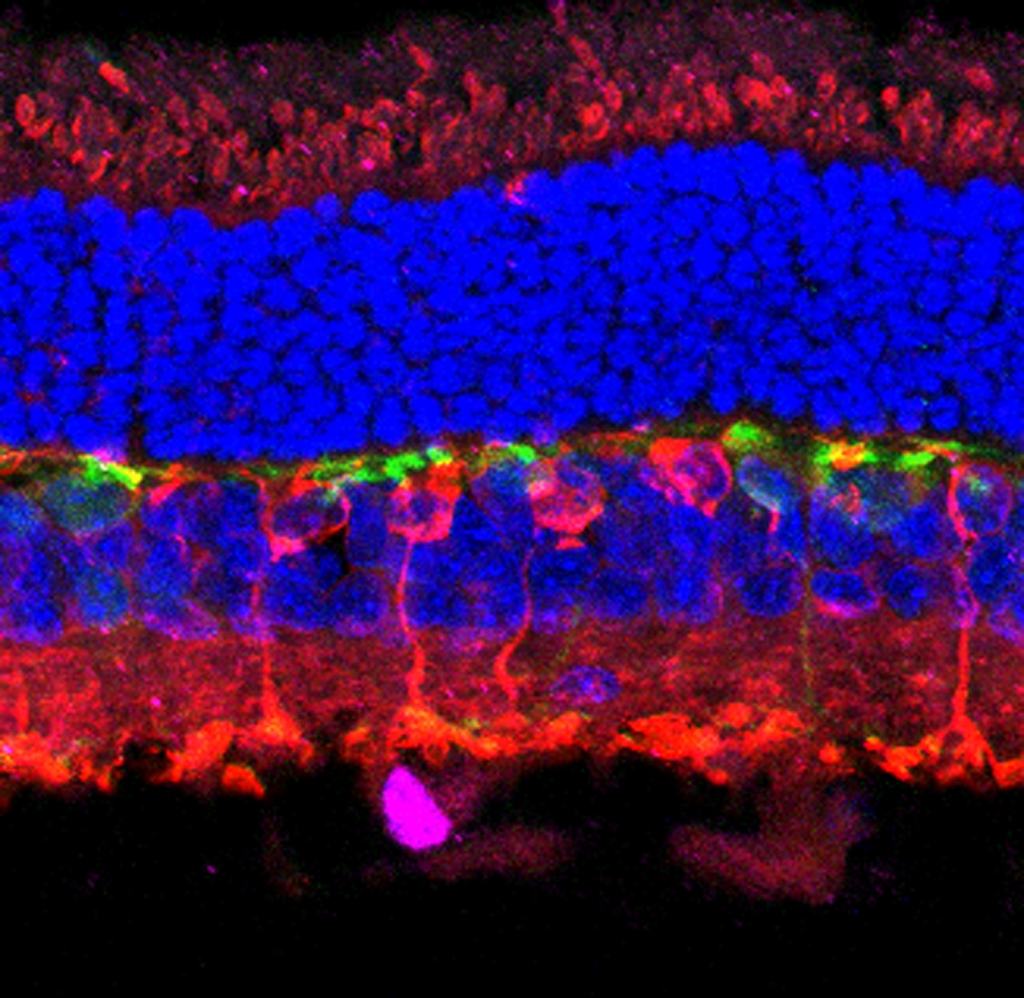DRUG4SIGHT

(credit: Pedro de la Villa, UAH)
A research project that aims to discover and characterise a series of compounds that can stimulate proteins still present in the degenerated retina and make the non-degenerated remnant cells act as photoreceptors, light-sensitive cells
In degenerative diseases of the retina, such as retinitis pigmentosa (RP), photoreceptors (mainly sticks) and pigment epithelium suffer progressive damage. On a functional level, this leads to the progressive loss of the mid-peripheral visual field and night blindness. Despite this, the retina’s internal neuronal circuit persists.
The DRUG4SIGHT project aims to discover and characterise a series of compounds that can stimulate proteins still present in the degenerated retina and make the non-degenerated remnant cells act as photoreceptors, light-sensitive cells.
Preliminary data with an active compound shows that the degenerated retina can be rapidly photosensitised in blind zebrafish larvae that recover their vision. These results are encouraging but should be confirmed in animal models with a visual system that is more akin to that of a human being.
Our aims are:
- To validate this therapeutic approach through the in vitro photosensitisation of degenerated human retinas and evaluate changes in visual function in animal models of retinal degeneration.
- To identify a light-regulated candidate compound that is safe and pharmacologically selective, that responds to visible light and that demonstrates a high efficacy in restoring vision.
The expected result of the Project is the identification of a compound among a library of candidate molecules that leads to the first clinical trial of light-regulated drugs for vision restoration. These results would represent a major scientific and therapeutic advance and would have a significant social impact on all those who suffer from degenerative vision diseases.
The DRUG4SIGHT consortium consists of bioengineers, medical chemists, retinologists and clinical physiologists and has the support and collaboration of patient associations, technology centres and pharmaceutical companies.
Caption of the photograph above: Vertical section of adult rabbit retina. Immunocytochemical labelling with antibodies speci=ic for bipolar cells (red), horizontal cell processes (green) and ganglion cells (violet). The labelling of the cell nuclei of the external and internal nuclear layers is shown in blue. A nonspeci=ic labelling of the external segments of the photoreceptors and the internal plexiform layer is appreciated.